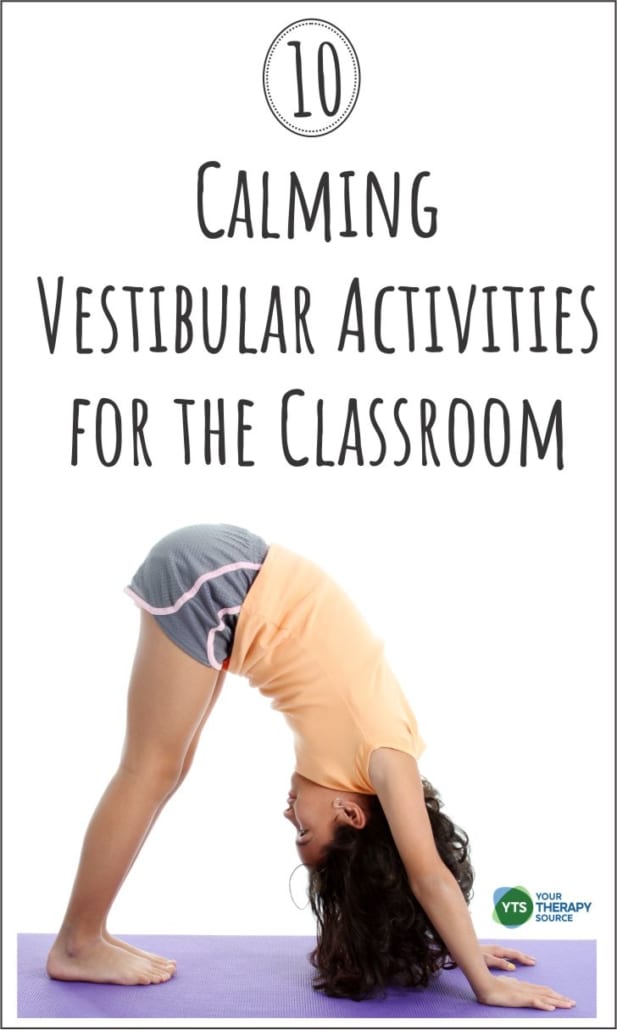10 Calming Vestibular Activities for the Classroom
Are you in search of easy, calming, vestibular activities for the classroom? Vestibular activities can be very beneficial to students to help get their bodies and brains ready to learn. Let’s take a closer look at why vestibular activities are helpful throughout the school day for some students.
What is the vestibular system?
The vestibular system tells the brain about where the head is in space and how the body is moving through space. In simple terms, it is responsible to provide information regarding movement and balance. It is located in the inner ear where it receives input from the other senses such as visual, tactile and auditory information. It receives and sends signals regarding rotational (circular) and linear (straight) movements.
Why is the vestibular system important?
Children and adults use vestibular input to maintain upright posture, balance and move through space. It also provides information as to whether things around you are moving. We need vestibular input to tell us about the speed and direction of how and where the body is moving in space.
Problems with the vestibular system can result in balance deficits, excessive physical activity, avoidance of physical activity, motion sickness and changes in arousal level.
10 Calming Vestibular Activities for the Classroom
In general, fast movements tend to be alerting and slow movements tend to calm the vestibular system. Vestibular input can be very powerful and can last for a long time after completing different activities (think of a time when you experienced motion sickness and how long it took to go away). Be respectful of a child’s preferences regarding vestibular input. Some children may crave vestibular movement and some child avoid movement.
Here are 10 suggestions for calming vestibular activities for the classroom:
- Rocking back and forth in a rocking chair.
- Perform gentle stretches especially the neck and back.
- Slow marching in a straight line.
- Inverting the head (some children find this calming, some children dislike this position) ie Downward Dog yoga pose
- Yoga
- Tai Chi for Children
- Slow rocking sitting on a therapy ball.
- Tuck and Rock – lay on the floor on your back, bring your knees to the chest and wrap arms/hands around knees so body is in a ball shape. Rock back and forth slowly on your back. This activity is included in Physical Activity Cards and Game packet.
- Rocking back and forth on all fours on the floor.
- Animal walks especially if the head is inverted ie bear walk, slow donkey kicks, etc. Try Animal Actions A-Z for ideas.
Need more sensory strategies for the classroom?
The Sensory Strategies for the Classroom Bundle includes 9 digital downloads to help students to be ready to learn or participate in functional tasks.





